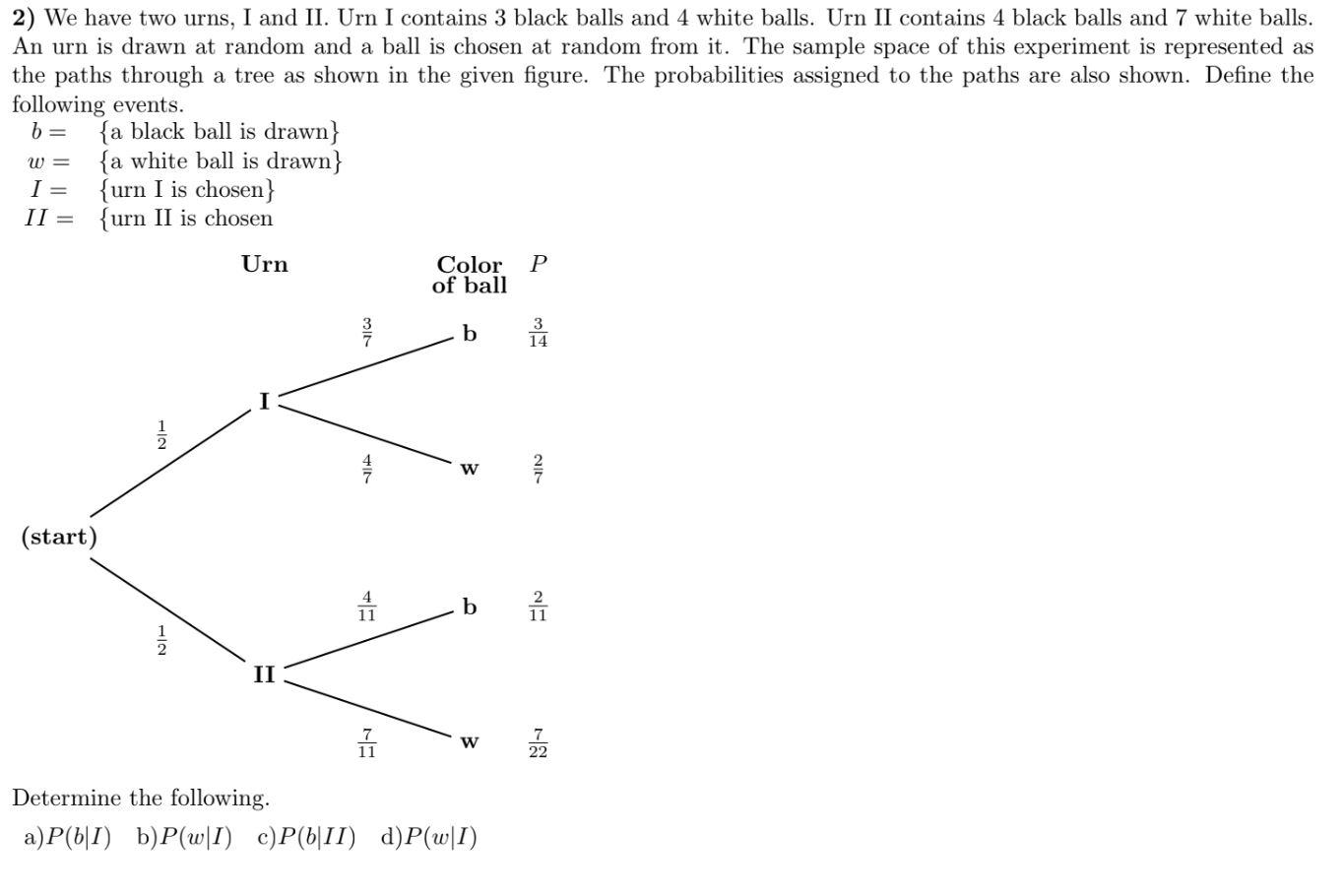Home /
Expert Answers /
Statistics and Probability /
2-we-have-two-urns-i-and-ii-urn-i-contains-3-black-balls-and-4-white-balls-urn-ii-contains-4-b-pa424
(Solved): 2) We have two urns, I and II. Urn I contains 3 black balls and 4 white balls. Urn II contains 4 b ...
2) We have two urns, I and II. Urn I contains 3 black balls and 4 white balls. Urn II contains 4 black balls and 7 white balls. An urn is drawn at random and a ball is chosen at random from it. The sample space of this experiment is represented as the paths through a tree as shown in the given figure. The probabilities assigned to the paths are also shown. Define the following events. \[ \begin{array}{l} b=\{\text { a black ball is drawn }\} \\ w=\{\text { a white ball is drawn }\} \\ I=\{\text { urn I is chosen }\} \\ I I=\{\text { urn II is chosen } \end{array} \] Determine the following. a) \( P(b \mid I) \) b) \( P(w \mid I) \) c) \( P(b \mid I I) \) d) \( P(w \mid I) \)
